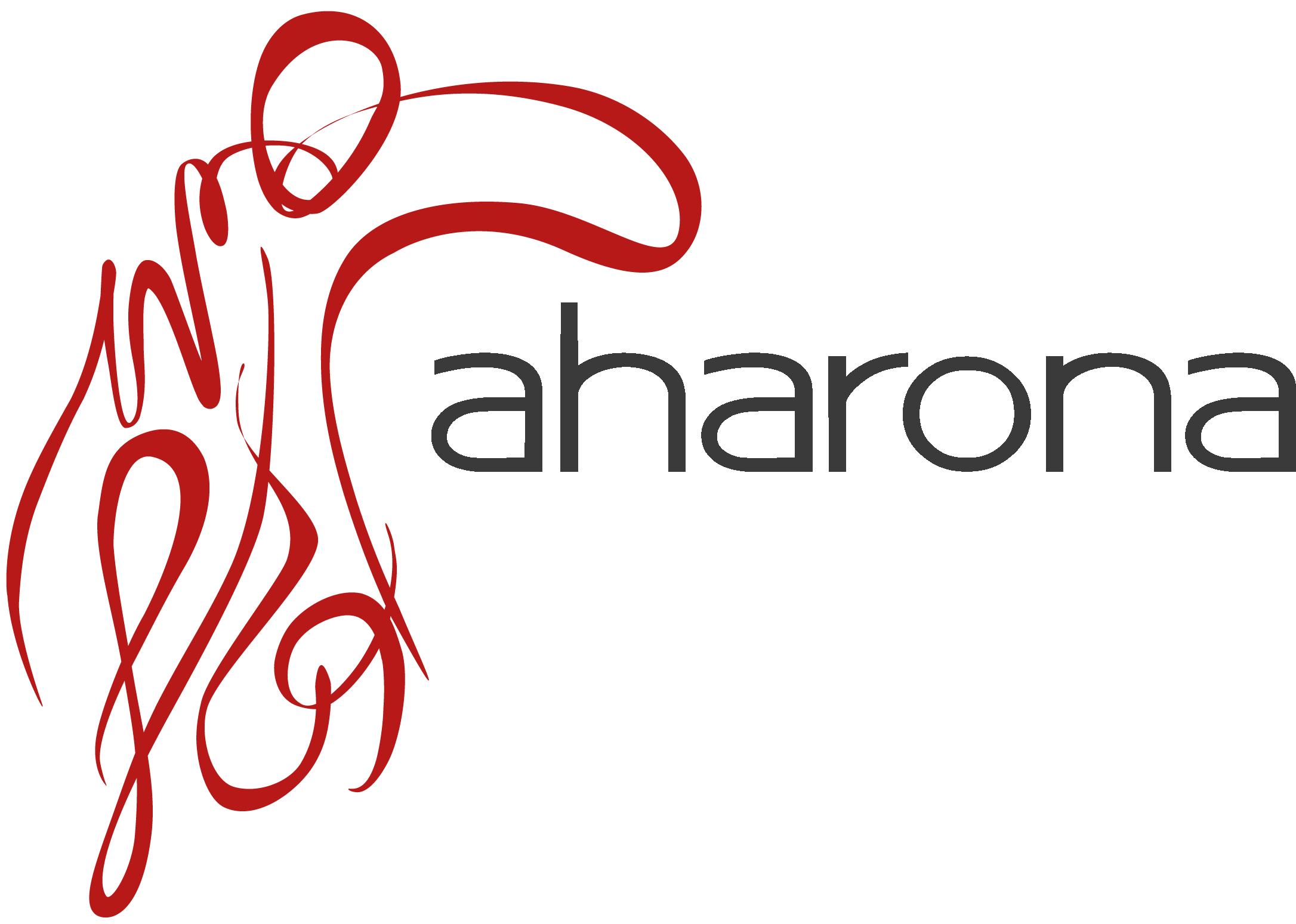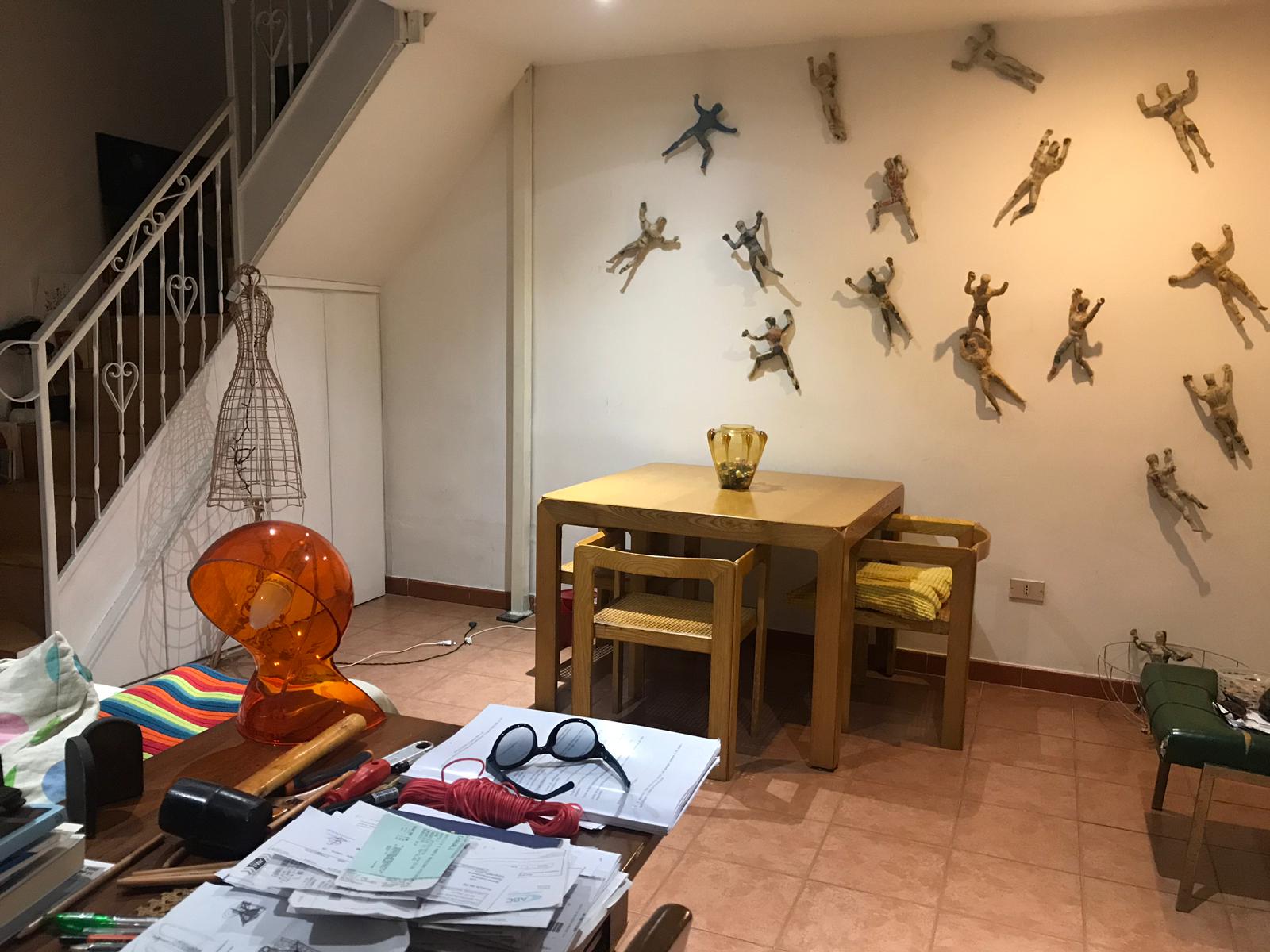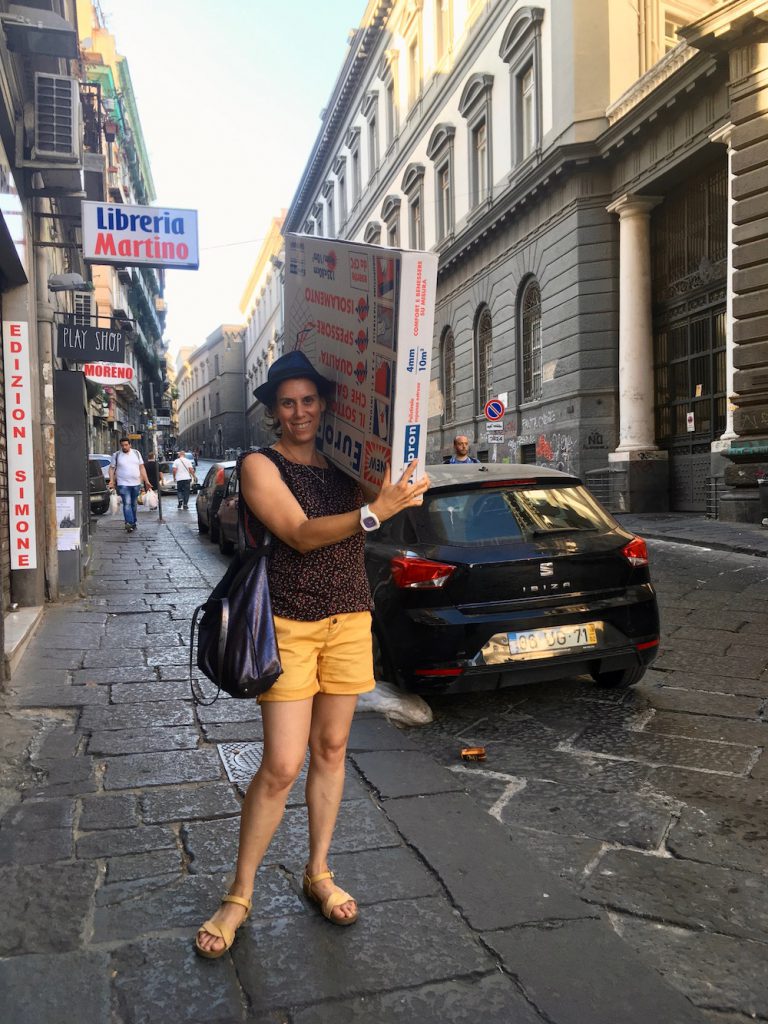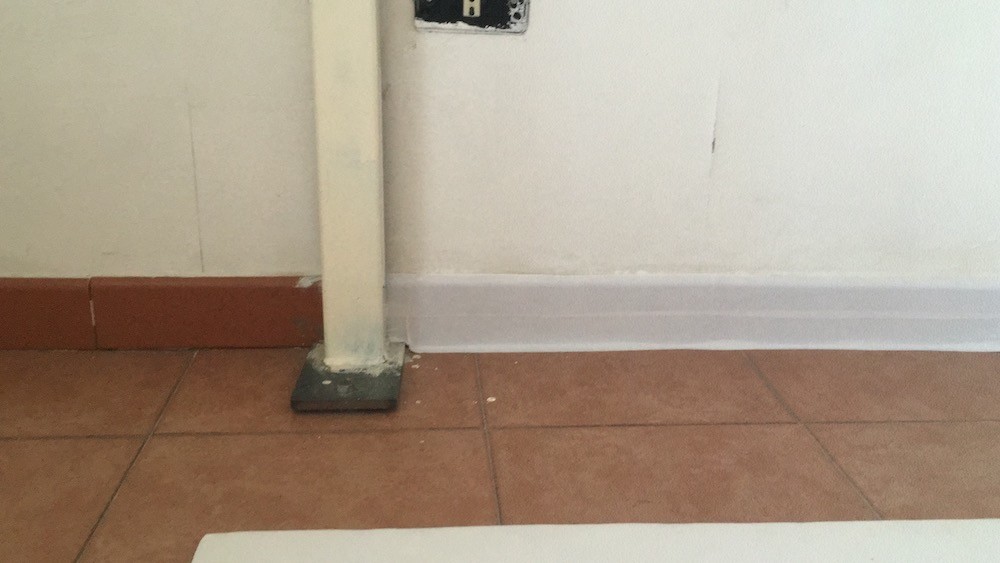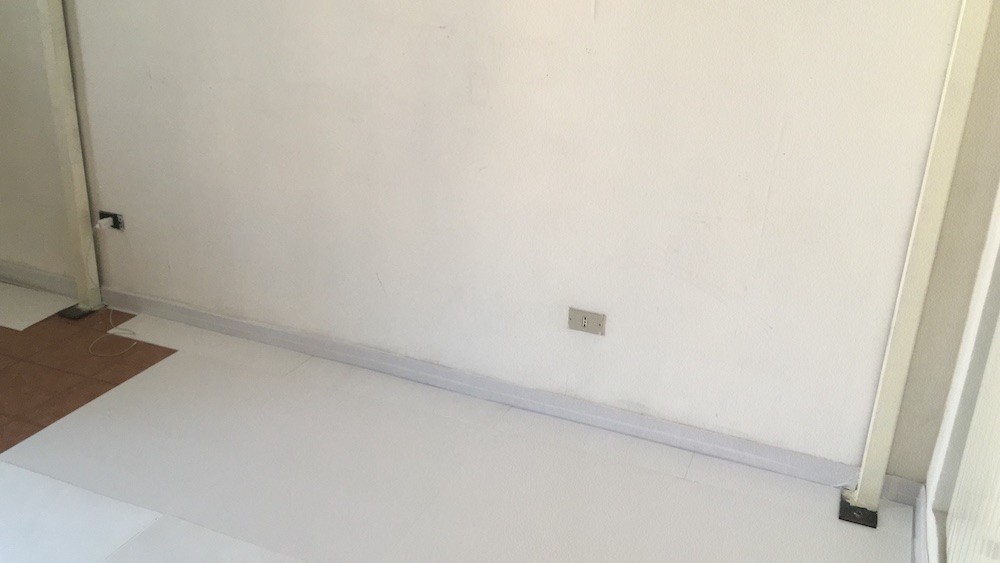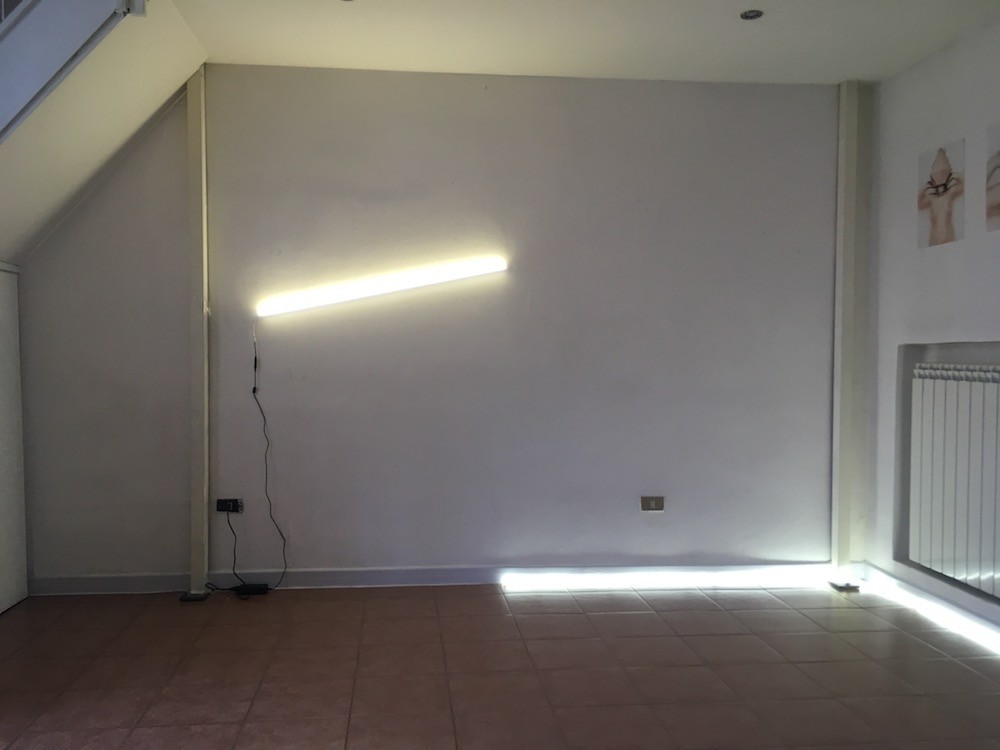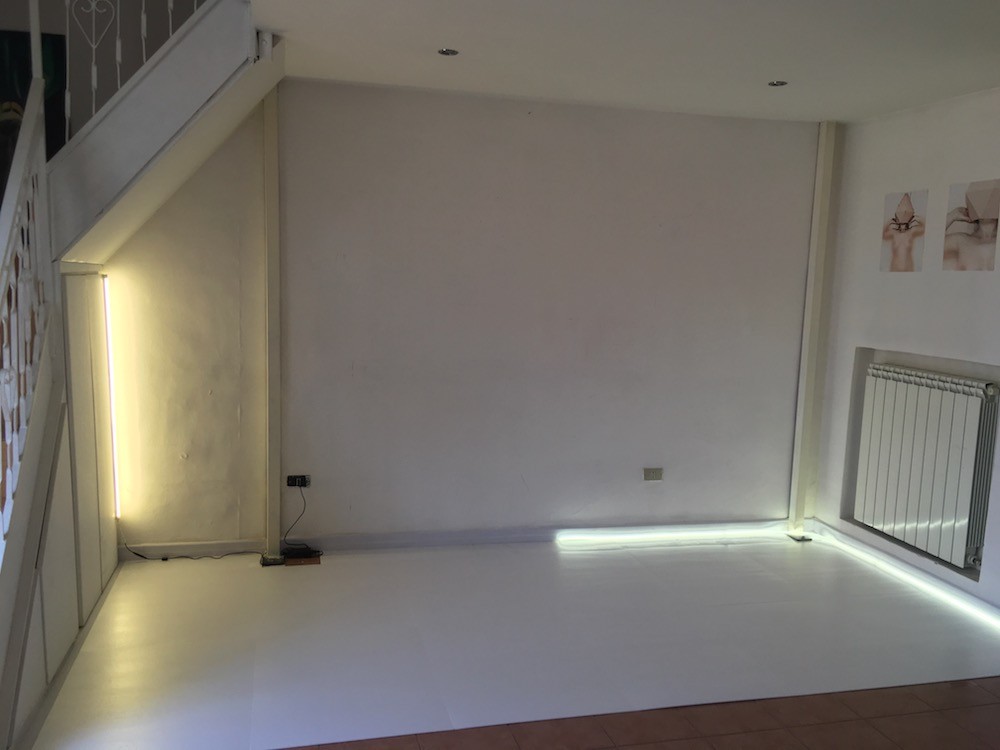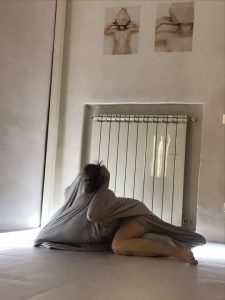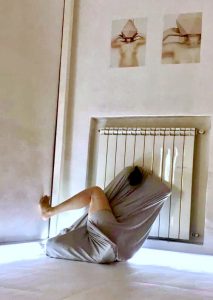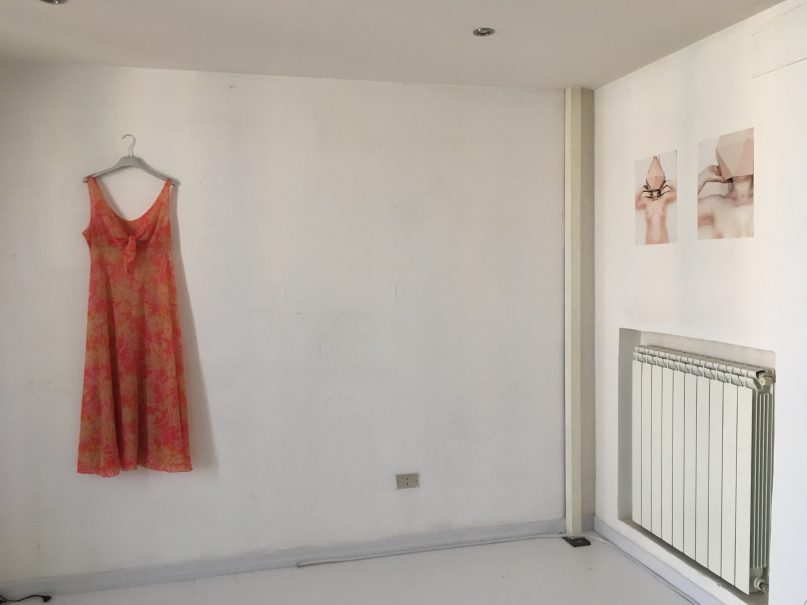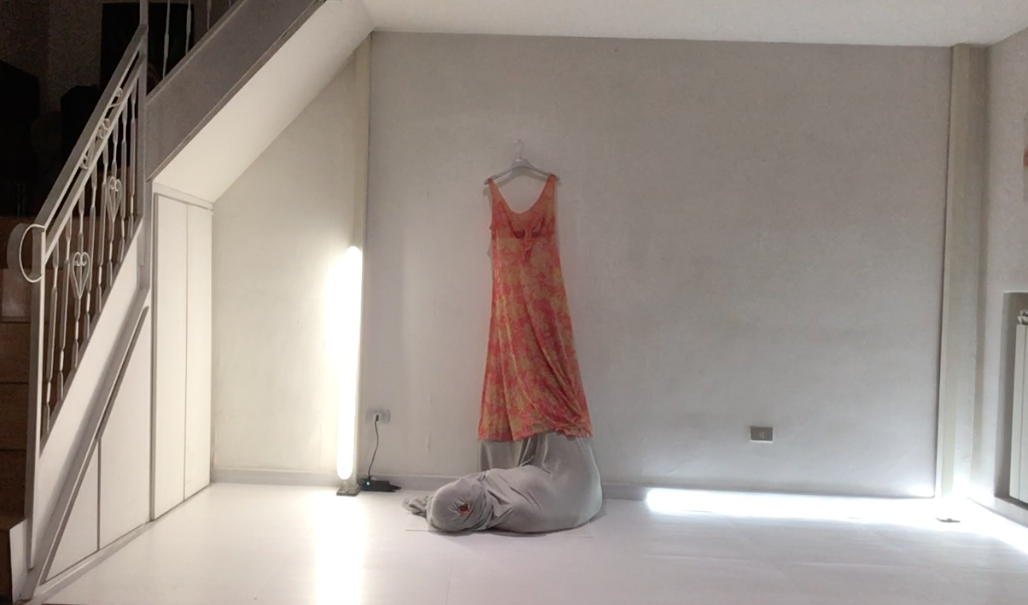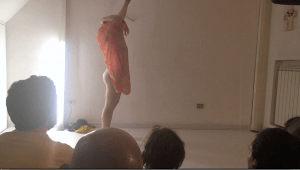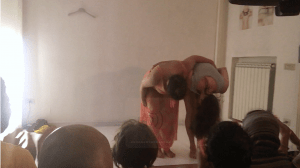Altofest is a unique experience. It is a kind of festival that stimulates your inner process as an artist considering and reconsidering your work in relation to its crucial points of departure, to audience and to performance situation in general. The festival present dance, theatre and performance works in outdoor locations and mostly in private houses composing urban landscape, domestic intimacy, and art interventions.
The Artists who are invited to perform in the festival spend a period of 5 days residency at the same house in which they present their work and are invited to "examine how an artistic creation process can inhabit a domestic space" and what happens to an artistic work, when it loses its formal theater space and becomes a way of inhabiting space.
The relationship between everyday life and processes of artistic creation intensify during this process. As artist, you are dealing with different questions as what is crucial to be seen in your work and what you can depart from? which inspiration you take from the space and the way it is use daily? how to "make visible unforeseen possibilities" both in the space and in your work? another important question relates to your host their personality and the way it manifest in daily life and in the home environment.
I was invited to participate in the 9th editions of Altofest this summer, June 2019 and stayed for 10 days with Debora Di Lorenzi who opened her house and heart to me. The festival discussions bring up two main themes: 'Resistance' and 'Co-existence'. i feel my decisions during the residency period were pretty much in between these two themes.
This Blog is based on notes i’ve wrote during the residency and after the festival.
Day 1 - Arriving at her house i find out that Debora's home is full with creativity and style, however a very different style then of my work. Debora's house is full with details and colours and my work is minimalistic choreography that usually placed in a grey monochromatic installation.
Day 2 - I decide to create a space which will relate to Debora's house as opposition, to create a minimalistic white space, in that way i create my world within her world. I choose part of her living room as my main performance space and decide to move away the dining table and some objects from the wall. Asking myself what else is needed to create a minimalistic quiet space, i decide to construct a new floor. At a construction shop near by i buy some pieces of white styrofoam which can be cut and placed on the floor easily. As part of the process i was also playing with LED lights i brought from Israel which are usually part of the installation of the piece. I am searching for the right position in relation to the architectural elements.
Eventually the installation is ready. it took about three days of precise work in which i felt like moving back into my time as an architecture student... Now i can change the choreography to its new dimensions and make relations to the architectural space and all the elements in it.
Day 3 - Deborah is a photographer of 'smart art' and her work is very present in her house. While preparing the performance space i notice two of her pictures on the wall. I like them. I feel it have much in common with my work, both the theme and aesthetics as it deals with the relationship between the female body and an object and establish similar relationship towards the gaze upon the body through which the body is partly exposed and partly covered. I decide to leave these two pictures on the wall and change the end of the piece towards this wall so it will reflect upon and echo Debora’s pictures.
Days 3-6 - Sound recordings - The sound of ‘Proportions’ is a unique text i’ve recorded with my own voice. I’ve made it from texts extracted out of different commercials who sell different products to women, such as tampons, shampoo makeup etc. those are actually selling a certain image in which the female body should fit into. In the process of making the sound i took inspiration from the spoken composition of the piece ‘Not I’ by Samuel becket. The original sound is a mixture of english and Hebrew. Prior to my arrival to the festival artistic director Anna Gesualdi and myself discussed the possibility of translating the sound to Italian. She proposed to translate and record only parts of it to Italian and keep a three language text for sound and I liked the idea.
I sent to the festival parts of the text for translation. The translated text arrive on day 2. I ask Debora if she would like to help me with that and she agrees. On days 3-4 we record. we close ourselves at the small hot kitchen to avoid noise from the street late at the night and early in the morning before Debora goes to work. I instruct Debora of the way of speaking, pronunciation, dynamic, volume and pitch. The next days i will be editing the Italian texts into my original sound work, interweaving our voices together. The result that came out was pretty much to my satisfaction.
Day 7 is the second day of the festival and my first performance. The small living room of Deborah is packed with 30 people. I feel it was a good show. When i see the pictures Debora took of the end of the show with her two pictures I am happy.
Still i feel i miss something…
now that everything stand as i imagined it, i ask myself whether I can invite Debora’s world even more into the installation.
My next performance in on day 9 and 10 During day 8 i go to see other performances together with Debora. Some question are arousing in me - could i relate more to Deboras style, presence and aesthetic? Could i perhaps involve her in the piece some how? And what about bowing? Normally i don’t bow as i see this piece more as a choreographed installations and also because i am mostly hidden during the performance and hate killing the mystery. But performing in a house is different then in a gallery... there is a sense of community and everything is less formal. i feel Bowing might fit in here.
I took some decisions:
- To find a way to exit the white space towards the kitchen and dance a bit in there.
- To find a creative logic to be able to show myself to the audience at the end of the performance
- To involve Debora in the performance
- To invite another specific object from her house into the installation.
The next pictures show some of the changes i’ve made on the next two shows based on these decisions. The solutions i found are very much related to my new work 'Textile & Flesh' which deal with female body image and its representation in relation to physical actions involving cloths.
